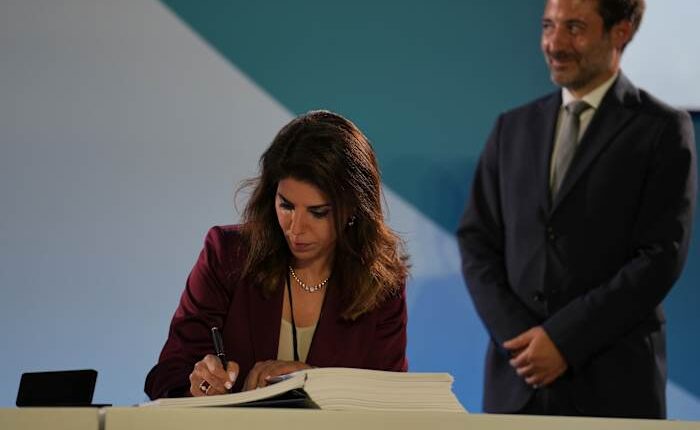
The High Seas Treaty, also known as the Agreement on Biodiversity Beyond National Jurisdiction, has seen a significant boost in ratifications. Currently, 49 countries have ratified the treaty, with 18 countries joining in support at the U.N. Ocean Conference in Nice, France. This brings the agreement close to its activation point, as it requires 60 ratifications to come into effect.
Here’s what the treaty is, why it matters and what happens next.
What is the High Seas Treaty
The treaty is groundbreaking as it is the first binding agreement that aims to safeguard marine biodiversity in international waters. These areas, not governed by any single nation, constitute a substantial portion of the planet’s surface, covering almost two-thirds of the ocean. However, they face mounting threats from activities like overfishing, climate change, and the potential for deep-sea mining.
Until now, there has been no comprehensive legal framework to create marine protected areas or enforce conservation on the high seas.
Why is it needed
The mounting pressures on the high seas have raised concerns among environmentalists about the long-term health of marine ecosystems in these regions. Without adequate safeguards in place, irreversible damage could occur, posing a significant risk to biodiversity and ecological balance.
“Until now, it has been the wild west on the high seas,” said Megan Randles, global political lead for oceans at Greenpeace. “Now we have a chance to properly put protections in place.”
The treaty is also essential to achieving the global “30×30” target — an international pledge to protect 30% of the planet’s land and sea by 2030.
How the treaty works
The treaty creates a legal process for countries to establish marine protected areas in the high seas, including rules for destructive activities like deep-sea mining and geo-engineering. It also establishes a framework for technology-sharing, funding mechanisms and scientific collaboration among countries.
Crucially, decisions under the treaty will be made multilaterally through conferences of parties (COPs) rather than by individual countries acting alone.
What happens when it reaches 60 ratifications
Once 60 countries ratify the treaty, a 120-day countdown begins before it officially enters into force. That would unlock the ability to begin designating protected areas in the high seas and put oversight mechanisms into motion.
As of Monday evening, 49 countries and the EU had ratified, meaning 11 more are needed to trigger that countdown.
What comes after ratification
The first Conference of the Parties (COP1) must take place within one year of the treaty’s entry into force. That meeting will lay the groundwork for implementation, including decisions on governance, financing and the creation of key bodies to evaluate marine protection proposals.
Environmental groups are pushing to surpass the required 60 ratifications, and to do so quickly – the more countries that ratify, the stronger and more representative the treaty’s implementation will be. There’s also a deadline: only countries that ratify by COP1 will be eligible to vote on critical decisions that determine how the treaty will operate.
“To reach 60 ratifications would be an absolutely enormous achievement, but for the treaty to be as effective as possible, we need countries from all over the world to engage in its implementation,” said Rebecca Hubbard, director of the High Seas Alliance. “So the next step will be to go from 60 to global.”
The surge in support on Monday has raised hopes that 2025 could mark a turning point for high seas protection.
“We’re on the brink of making high seas history,” Hubbard said.
___
Follow Annika Hammerschlag on Instagram @ahammergram
___
The Associated Press receives support from the Walton Family Foundation for coverage of water and environmental policy. The AP is solely responsible for all content. For all of AP’s environmental coverage, visit https://apnews.com/hub/climate-and-environment
Copyright 2025 The Associated Press. All rights reserved. This material may not be published, broadcast, rewritten or redistributed without permission.

















